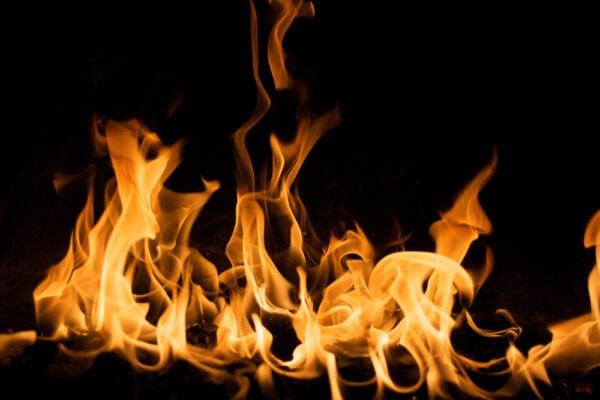
Introducing Flame Retardants PC-ABSCOM™ B6000 and PC-ASACOM™ S6000
Polymer Compounders Ltd has introduced the “world’s first halogen-free FR PC/ABS and FR PC/ASA materials that do not compromise on material properties.”
As the world around us changes, so do our polymer needs, more eco-friendly conscientious and safer choices are being made by consumers daily around the globe.
With the addition of the standard flame retardants in Engineering Styrenics and its blends such as TBBA and RDP/BPA-DP to the European Chemical Agency (ECHA) Community Rolling Action Plan (CORAP) list, Polymer Compounders Ltd (PCL) knew something needed to happen about the types of additives used in all significant flame retardant applications.
Understanding the significance of the upcoming ECHA review and the consequence of a shift in the industry, it made sense for PCL to pursue the development of its new patented polymer and help facilitate a positive change to safer flame retardant materials for the reasons outlined by the ECHA.
PCL, with a combined knowledge and experience of over 50 years of polymer science, accomplished the development of not one, but two non-halogenated flame retardant materials. The materials are PC-ABSCOM™ B6000 – an FRPC/ABS Blend and PC-ASACOM™ S6000 – an FR PC/ASA blend.
Both PC-ABSCOM™ B6000 and PC-ASACOM™ S6000 materials are not only safer and better overall for the environment but are also much better at carrying out the job required of any halogenated flame retardant polymer. Lastly and most importantly, they are compliant with the ECHA.
How were these objectives achieved, and what are the key innovations?
The first key innovation centred around the fact that traditionally when you add an additive or flame retardant package to a material, you ultimately sacrifice performance in another area such as heat performance or strength.
This means the polymer could end up with a lower impact strength and/or a lower tolerance to heat. Simply put, traditional flame retardant materials are unable to stand up to the rigours of the moulding process for an extended time. Non-halogenated flame retardancy packages are not bound within the matrix of the polymer. Due to this, the additives in turn react or start the migration process in the injection moulding barrel if the residence time is too long. Another weakness of traditional flame retardant packages is that the final moulded component will have lower stiffness at elevated temperatures because the flame retardant package has a plasticising effect on the host polymer. In addition, standard FR/ABS materials that also contain halogens utilise additional chemicals such as Antimony Trioxide as a co synergist to generate the compound which in turn extinguishes the flame.
PC-ABSCOM B6000 PC/ASA and PC-ASACOM S6000 on the other hand maintain their properties in all areas, which enable them to be utilised in many applications. They achieve this by not separating the flame retardancy from the polymer at the molecular level, essentially acting as one, with nothing leaching out.
What is unique about this technology development, and what are its implications?
PCL’s technological development has ultimately proved that the use of halogens or liquid phase materials are not necessary when creating a superior flame retardant polymer. It has also shown that safer products such as PC-ABSCOM B6000 and PC-ASACOM S6000 surpass all the required technical aspects of a flame retardant in a much better way.
PCL has been working closely for many months during the formula development stage of the products, with an industry-leading test house working to ISO 9001: 2015 accreditation for all results.
In summary, what were the key objectives of this material development?
PC-ABSCOM B6000 and PC-ASACOM S6000’s properties can be broken down and summarised into the following:
- To be a material with a halogen-free classification, which also has a favourable toxicity profile when compared with all other halogenated flame retardant materials.
- A material that does not migrate from host plastic.
- A material that does not ‘bioaccumulate’.
- A better melt-processable material.
- PC-ABSCOM B6000 and PC-ASACOM S6000 also maintain their physical properties and attributes in all areas compared with halogenated and liquid non-halogenated flame retardant materials.
- Patented and manufactured in the UK at PCL’s Durham manufacturing site with short lead times.
PC-ABSCOM B6000 Technical Data
- High flow and excellent complex tooling processability.
- Good heat performance Vicat (B/50) – 125°C.
- Excellent Impact performance – 46 kJ/m2.
- Halogen-Free UL94 V0 rating at 0.75mm.
- GWIT at 960°C.
- Approx. 5% Lower density (Sg of 1.14g/cm3) compared to similar FR PC/ABS materials.
FR PC-ABSCOM B6000, being the slightly tougher of the two products with an impact of 46 kJ/m2 would be an excellent choice for highly specialised automotive applications such as EV battery casings or applications that require toughness, with exceptional flame retardancy.
PC-ASACOM S6000 Technical Data
- Excellent UV Stability
- High flow and excellent complex tooling processability.
- Good heat performance Vicat (B/50) – 125°C.
- Excellent Impact performance –15 kJ/m2.
- Halogen-free UL94 V0 rating at 0.75mm.
- GWIT at 960°C.
- Approx. 5% Lower density (SG of 1.14g/cm3) compared to similar FR PC/ASA materials.
PC-ASACOM S6000, with its great weathering capabilities, is an excellent choice for any outdoor application that also requires class-leading flame retardancy.
PCL’s intention and persistence from the beginning to keep key performance attributes has meant that both PC-ABSCOM B6000 and PC-ASACOM S6000 have a market-leading balance of flow, impact, high temperature performance and processability. Furthermore, and most importantly, both materials do not contain any of the toxic halogens, which enables a safer world for everyone.
Polymer Compounders Ltd
+44 (0)191 378 3737
Website
Email






